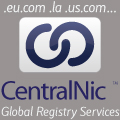translation
Translation at ICANN
Welcome to the translation page
This page has been set up to inform the community about the efforts being made within ICANN to move to being a more international organisation by providing materials in languages other than English.
Update: The summary of public input on the translation programme at the Delhi meeting has been posted to this site. You can read it here.
A translation glossary has been posted on the Web using Google spreadsheets. You can view it here. If you are interested in becoming part of the team that builds up and agrees upon the terms, please email the ICANN translation team on trans-comm [at] icann {dot} org.

The hope is that the community will review these pages and assist in helping the organisation by providing useful feedback, offering to help, supplying useful leads, and so on.
Translation issues
Back to main Translation page
The one thing that everyone that has reviewed the issue of translation across the organisation can agree upon is that it is a very complex issue with no easy solutions.
There are a number of difficult issues with respect to translation, which we will list here in the hope of sparking some review and debate and hopefully draw gradual consensus of the best way forward:
1. Which languages should ICANN adopt as main languages?
Translation co-ordination team
Back to main Translation page
ICANN has created an internal translation co-ordination committee with members from across the organisation.
The aims and goals of the team are given below. Under that, the ongoing work to each goal is outlined:
Translation principles and framework
ICANN translation principles
Back to main Translation page
ICANN will provide timely and accurate translations, and move from an organisation that provides translation of texts to one that is capable of communicating comfortably with a range of different languages.
The translation framework comprises a four-layer system:
- The bottom layer contains those specific documents and
publications that address the organisation’s overall strategic
thinking. They will be translated into an agreed block of languages. -
The next layer contains a class of documents that ICANN undertakes to
provide in different languages to allow interaction within ICANN
processes by non-English speakers. - The third layer comprises documents suggested by ICANN staff as being helpful or necessary in ongoing processes; and documents requested by the Internet community for the same reasons. These documents will be run through a translation approval system.
- The top layer is where the
community is encouraged to use online collaborative tools to provide
understandable versions of ICANN materials as well as material
dynamically generated by the community itself. ICANN will provide the
technology for community editing and rating, and a clear and
predictable online location for this interaction to occur. It will also
seek input from the community to review the tools.
















